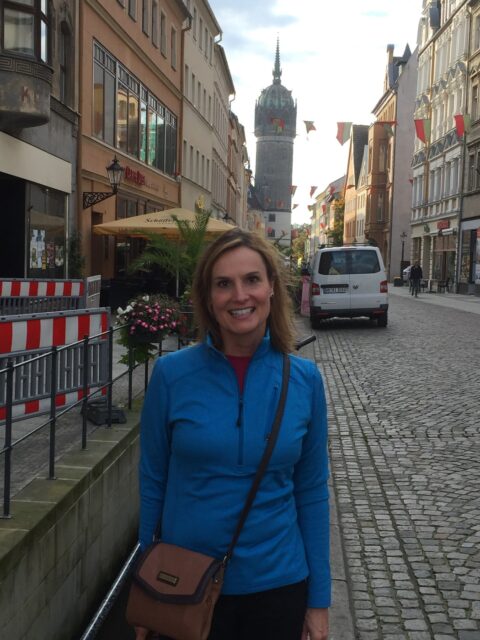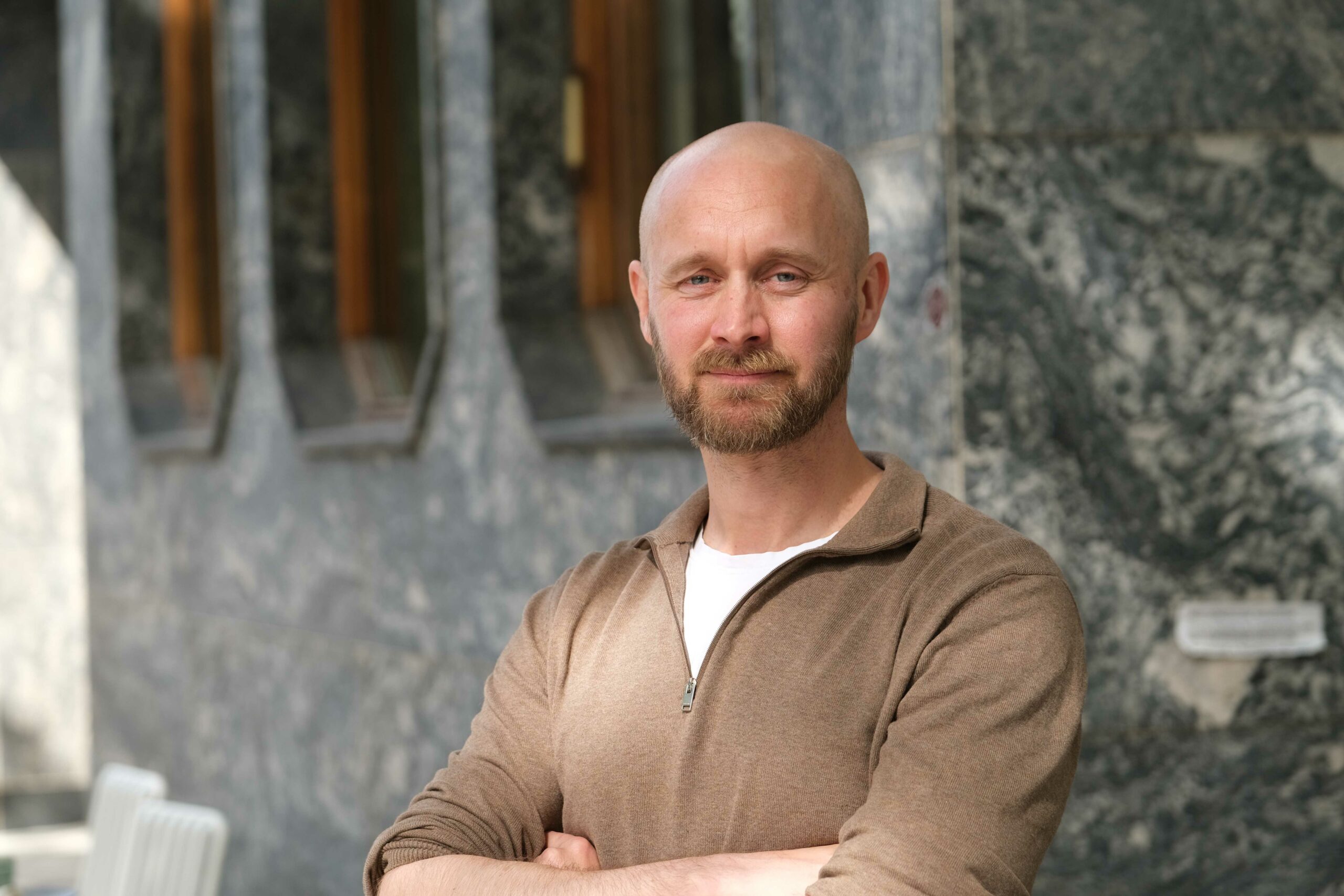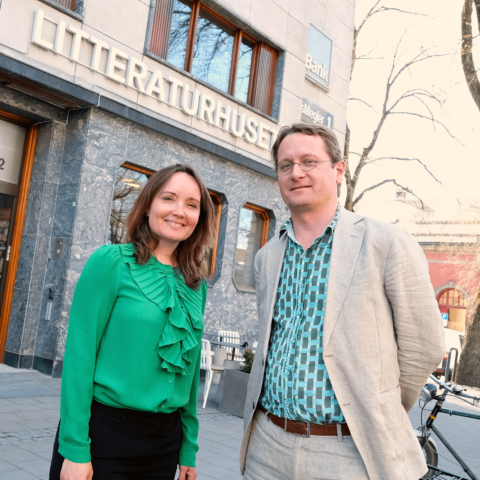Verses over Virus
Publisert den 20. mai 2020
Today’s breaking news: Shakespeare’s Globe Theatre may close for good, thanks to the coronavirus. But this is not new: During William Shakespeare’s life, bubonic plague outbreaks in Renaissance London closed theatres several times to squelch spreading contagion. And what did the Bard do? Already a successful playwright, he turned to writing poetry. Quarantined at home in 1593, Shakespeare wrote sonnets and the epic poem Venus and Adonis which produced these memorable lines of escaping solitude: “Thus weary of the world, away she hies, / and yokes her silver doves; by whose swift aid / Their mistress mounted through the empty skies.” The words may be literal for a goddess but figurative for mortals grounded in a physically constricted world weary of bad news. We long to travel to happier times and places physically out of reach but always available through literature, like John Keats’s nightingale to whom the poet calls, “Away! Away! For I will fly to thee . . . on the viewless wings of Poesy.” Being homebound draws us to nature, which engages our senses and stimulates the imagination, like the poets’ birds lifting our thoughts to higher places, helping us make sense of our situations and inspiring us to be better. This has been my experience during the Covid-19 crisis.
As an English professor, I have a captive audience using literature for both enrichment and encouragement. On April 30, the last day of U.S. National Poetry Month, I held a small celebration in which students shared favorite poems, written by themselves or others, just for fun. Some chose happy poems as a break from reality; others felt inclined to honor the dead or death as in Emily Dickinson’s “Because I Could Not Stop for Death, He Kindly Stopped for Me.” The best were students’ own poems exploring their experiences. A young woman on the college swim team shared her creation titled “Deep Blue,” referencing her feeling of free-falling into the unknown of Covid. A student of Chinese ancestry read a piece describing the Asian Anti-Pathogen Racism she has experienced during the pandemic. Her vulnerability brought support and solidarity from her classmates which inspired her to submit her work to a creative writing contest. Even across the Internet, we felt the warmth and enthusiasm of heart-to-heart literary exchanges.
Over the past two months, my literature students have readily applied poetic messages of distant eras to their current coronavirus emotions. They take Dylan Thomas’s entreaty, “Do not go gentle into that good night. / Rage, rage against the dying of the light” as an anthem for the sick and the doctors and nurses caring for them. Robert Frost’s “Fire and Ice” is not lost on my students: “Some say the world will end in fire, / Some say in ice.” They recognize the ways humans have destroyed each other and harmed the earth through hate and coldness. Covid is a late-in-the-game wake-up call voiced more than 200 years ago by William Wordsworth: “Getting and spending, we lay waste our powers: / Little we see in Nature that is ours.” As we try to cope with our fears, anxieties, and uncertainties, we could turn to binge-eating, binge-watching, or creating funny videos for social media, but in my mind, there is no better metaphor than nature for hope, endurance, kindness, and love.
When my college shut down in March and I started teaching from home, my screen-time breaks became short strolls around the neighborhood. On one of my walks, I greeted my next-door neighbor who shared that his mother and brother died on the same day in Manhattan—the day that New York City lost 700 people to the coronavirus. As I tried to process this level of pain, I turned to nature and to poetry.
Every morning the past few weeks, I have searched my own backyard for signs of new life and captured them in photos: pumpkin tendrils springing up where I dumped last fall’s decaying jack-o-lantern, new sprouts emerging from a recently pruned apple tree, weeds reappearing days after my plucking them from cracks in the pavement, a dove couple building a nest. These photos started as visual poetry, reminders that life will go on, and have since morphed into words, written as I sat in in a patio chair in my bathrobe observing the early morning wildlife in the suburban outdoors. On an early morning walk a few weeks ago, I witnessed a mass movement of snails making their way from a recently watered lawn across a concrete path, creating a maze of iridescent trails glittering in the rising sunlight. A few days ago, I saw two snails, one large and one small, nuzzling heads on a backyard plant; I took a picture and wrote a poem, not just documenting what I saw but how my perspective is changing about myself and fellow inhabitants of the earth.
Snails
It’s all about survival for the snails,
Venturing out in cool, moist mornings,
Searching for something green to suck.
Past springs I would pepper my garden
With slug and snail killer
And wake to the scene of abandoned shells—
The very substance that lured them
Had dissolved their soft inner parts.
Or plucking them from cucumber leaves,
I relished the dropping thunk of them
In plastic pails. I poured kitchen salt on them,
Melting their slimy flanks to foam.
But 2020 brings a new vision:
Praying for corona patients and their nurses,
I am loathe to kill any creature
Striving to survive—even snails,
Mother and child sharing a tender moment
On a spear of shrubbery.
Or the bachelor snail, after a night of binging,
veering in the sunrise, leaving a shimmering
trail on the sidewalk, alerting the walkers of the
World that he was here.
Sympathy towards nature’s creatures has manifested the most in my affection for birds, especially the doves whose eggs are now being nurtured in my backyard fence. My breaks from Zoom classes now involve checking the nest several times a day. This poem captures about three weeks of observing the dove couple:
Dove Couple
I heard a dove trill as he flitted through my yard last week,
Attentively seeking debris for strength or softness.
He pulled at a slim vine snaking through a hedge,
Working at it relentlessly, not realizing its attachment
To a thick, woody branch on the other side. Finally,
He moved on to more willing materials, pine needles,
Palm threads to weave (with his mate) their nursery, nested
In the fence dividing me from my neighbors.
I feared the precarious spot of the birds’ home,
Too accessible to predators—squirrels, crows, cats, or rats.
Today no joyful notes arch from fence to fence and again,
I fear for the dove father and mother, their expectant egg.
Stealthily, I sneak a peak in the hidden, boxy crevice and see
She sits, her round, feathered form filling the roost, protected
In a trinity of post, rail, and thorny rose bush, abiding
The time for life. Then, the vibrato call
Of the father, bug in beak, returning.
I am not a daily creative writer; in times past I was impelled by stress, trauma, or mourning to I delve into my innermost thoughts and feelings and then look outward for meaning as I have recently done in my backyard and neighborhood. As strange as it sounds, I am grateful for sheltering-at-home opportunities that have softened my heart towards creatures great and small and rekindled my poetic impulses towards joy. I am proud of my students’ literary endeavors, reaching within themselves, composing their own pieces to ease their anxieties. I sympathize with Shakespeare: The black death threatened his livelihood, and his siblings had died in a previous plague. But he emerged from solitude to create his best works, including The Tempest in which his character Miranda, having grown up isolated on a deserted island, sees other humans for the first time in her memory in such worthy terms:
O wonder!
How many goodly creatures are there here!
How beauteous mankind is! O, brave new world
That has such people in it!
May we come out of our quarantines with wonder, compassion, and generosity in the brave new world we will make.
Lesley Eide Gale is a Professor of English in Sacramento, California, USA, where she teaches literature and composition and leads a new faculty Equity Academy, promoting culturally relevant, anti-racist, anti-sexist educational practices.




